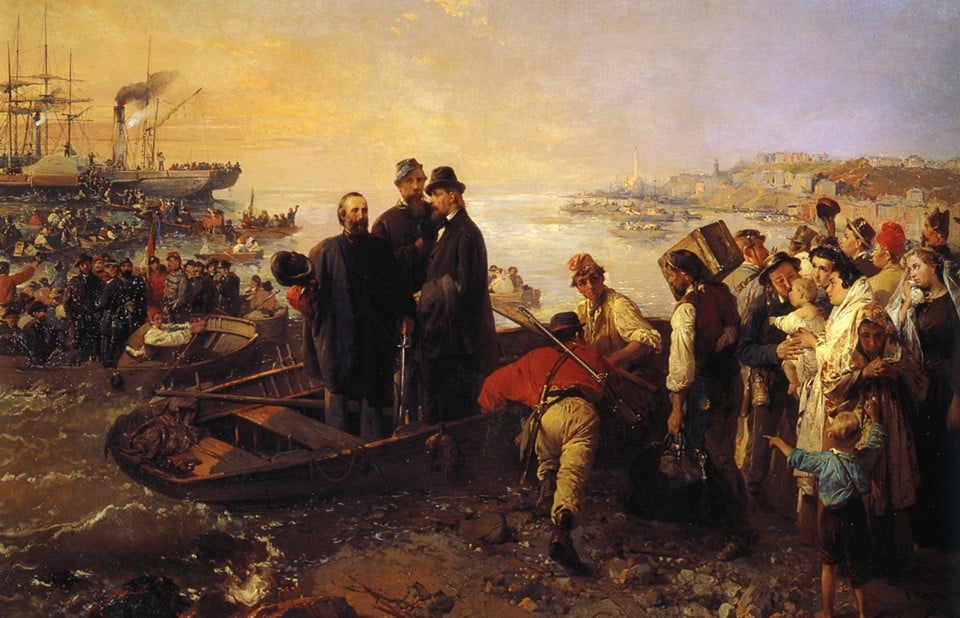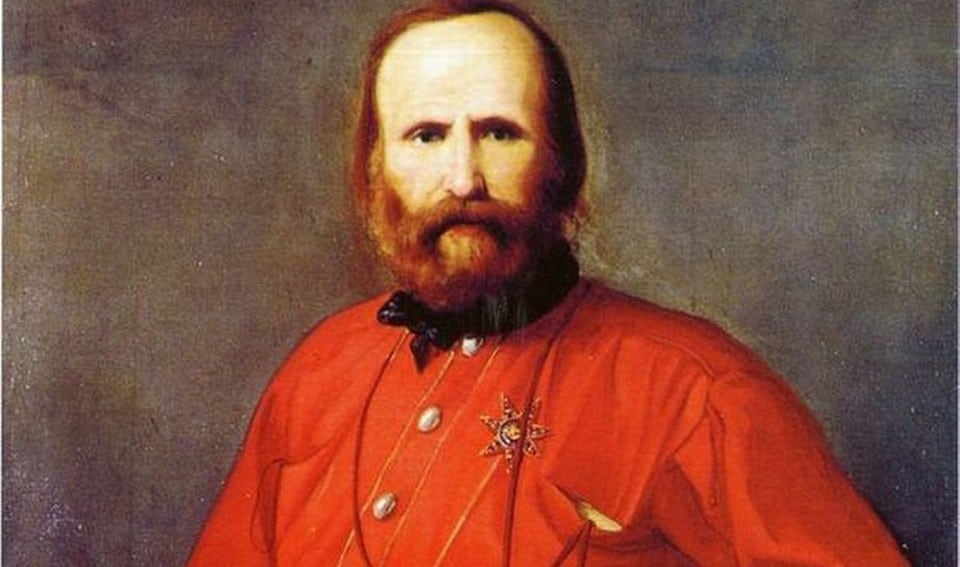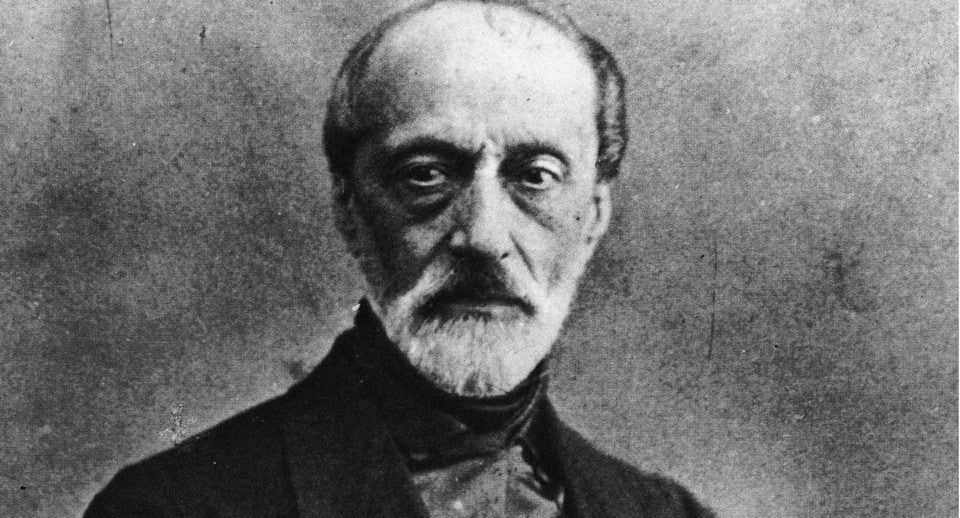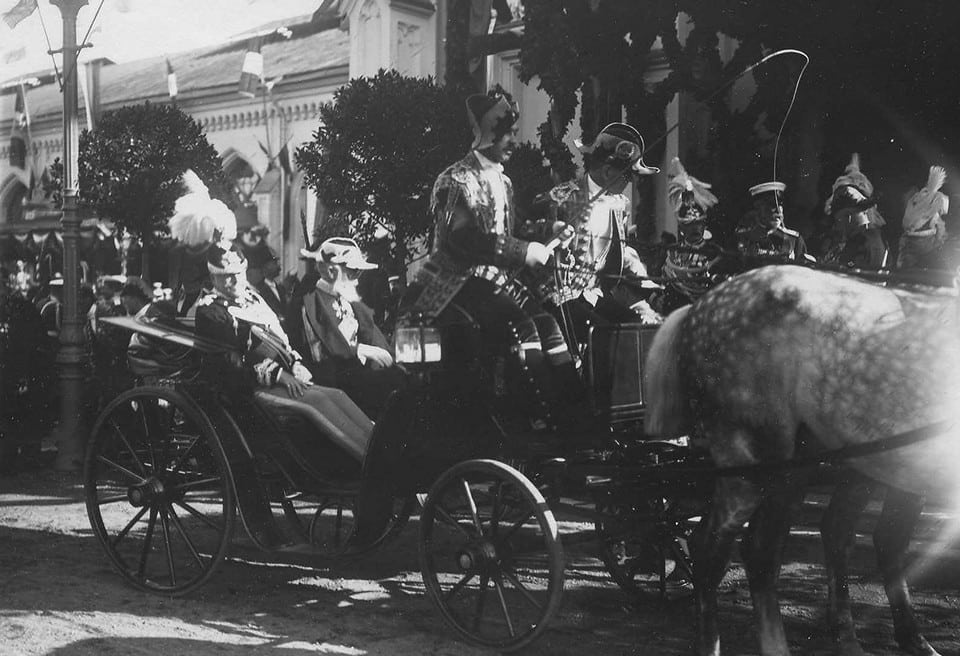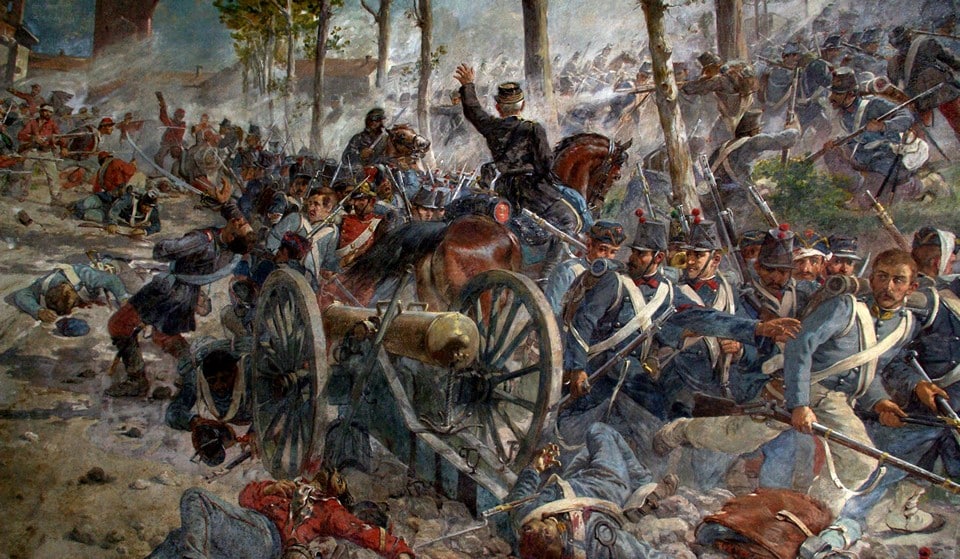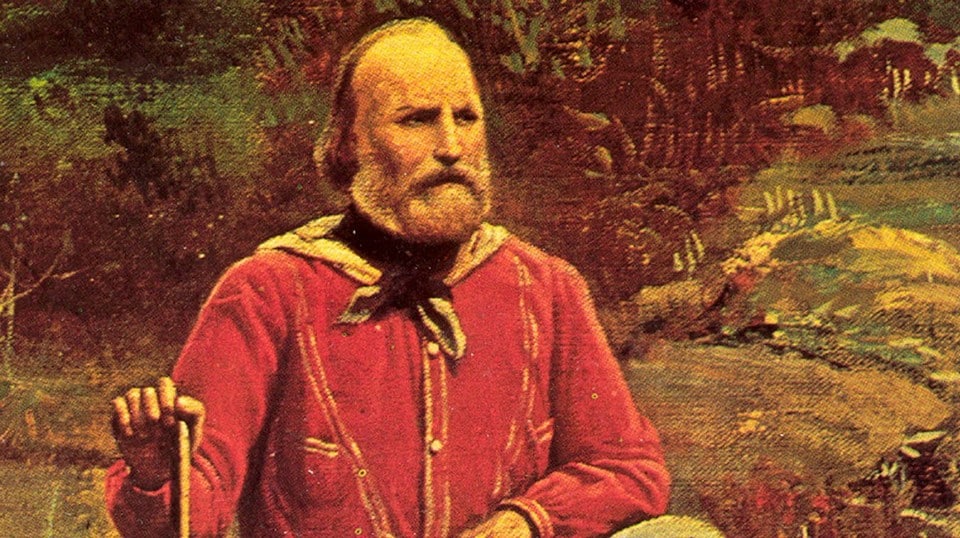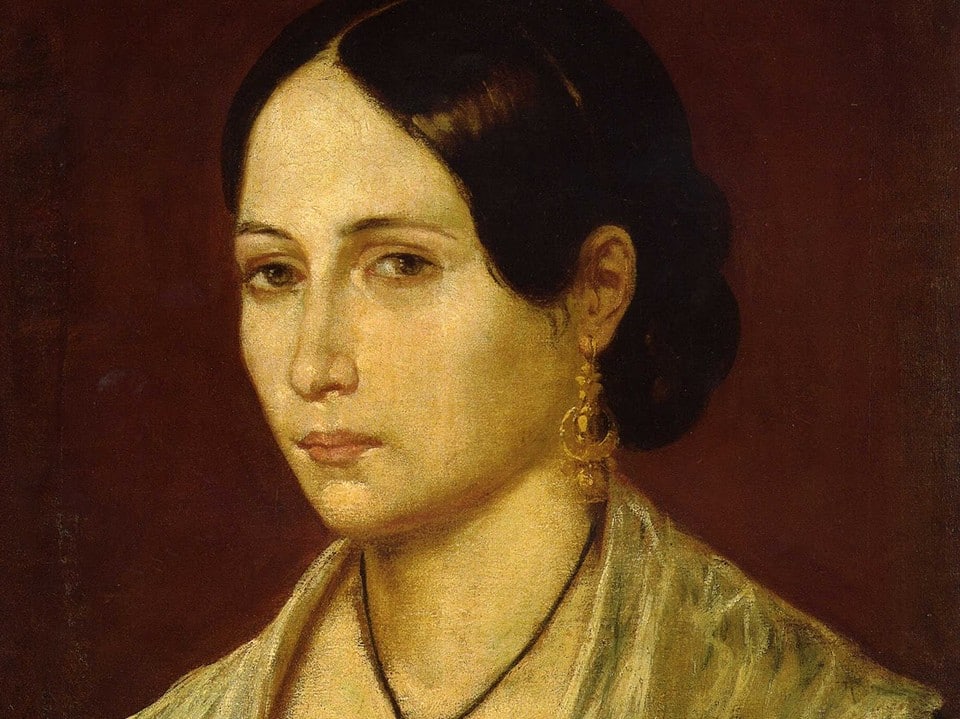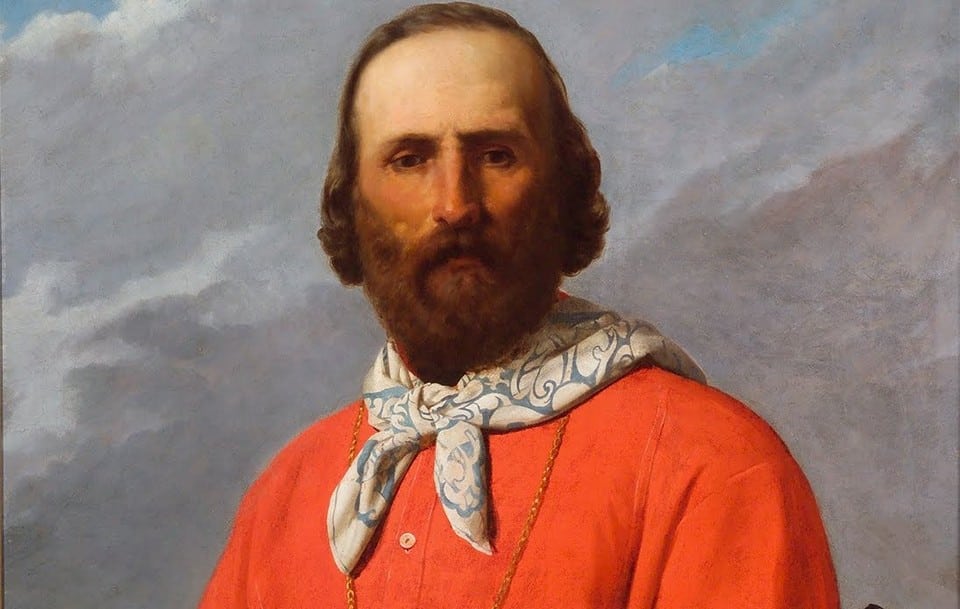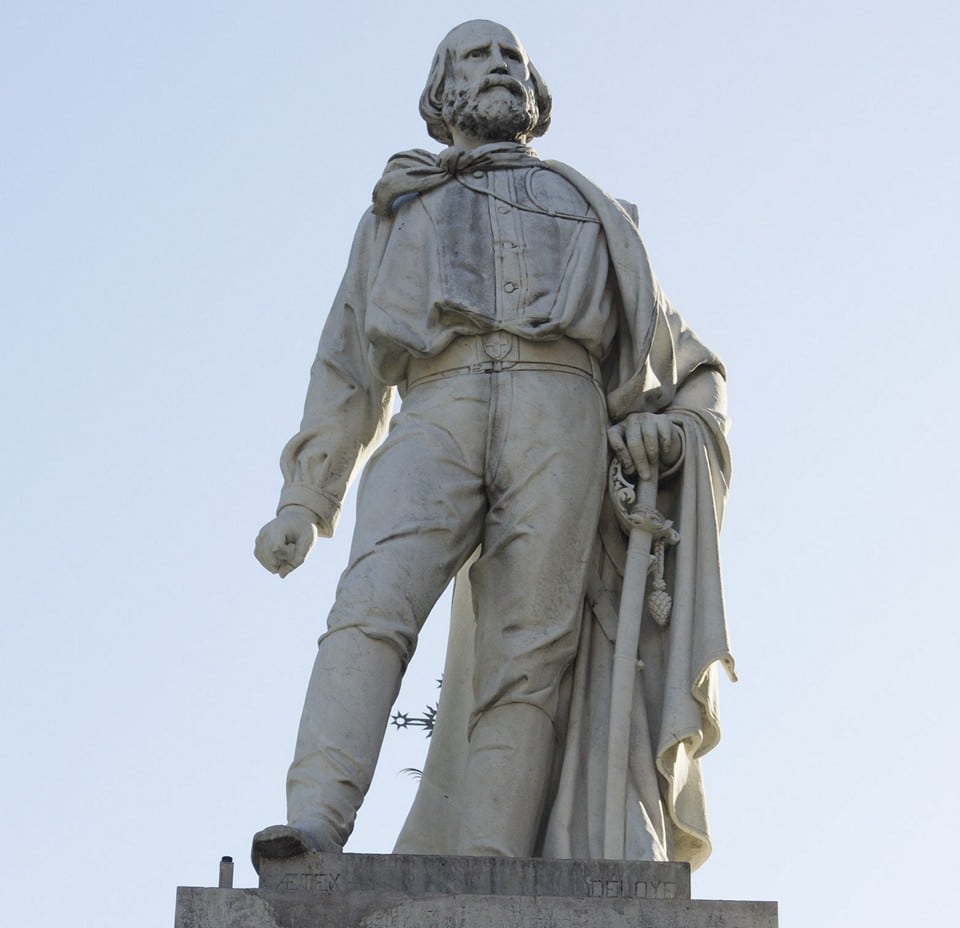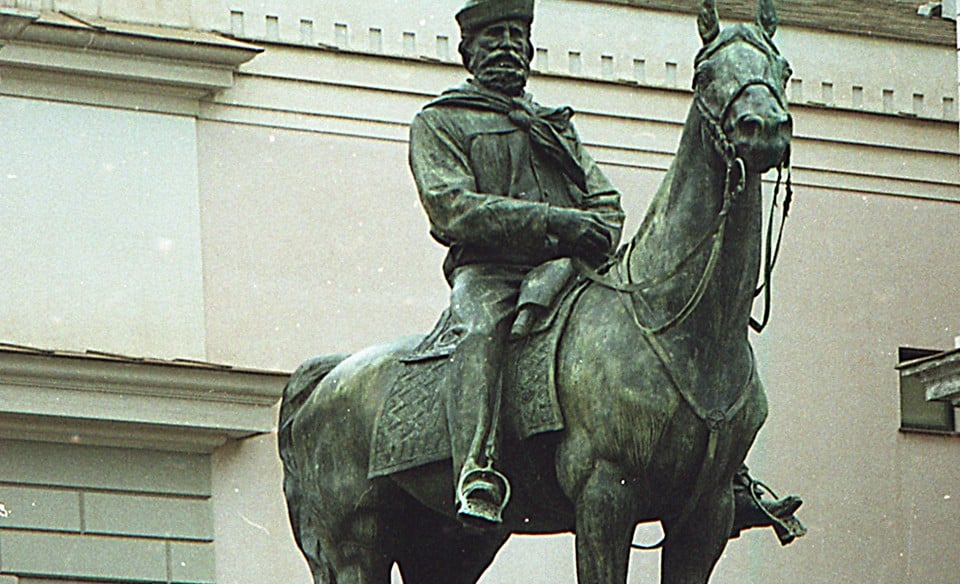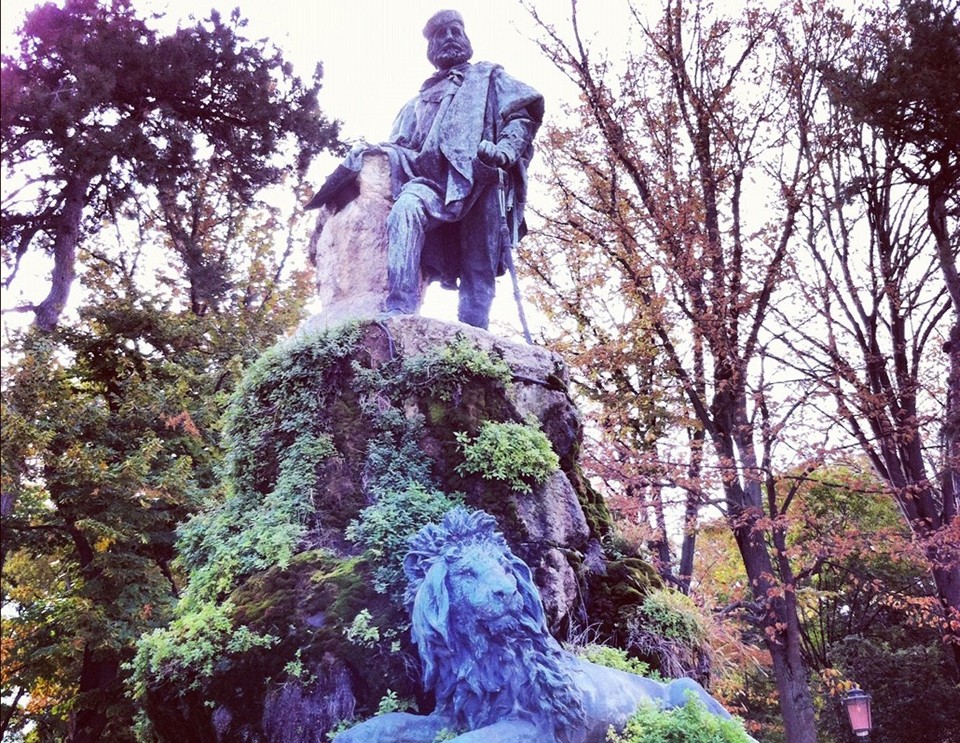Giuseppe Garibaldi was an Italian national hero, a legendary figure of the Risorgimento liberation movement. The name of the revolutionary became a symbol of freedom and unity.
The Italian commander was called the hero of the “two worlds”, his glory enjoyed by many politicians. Mussolini’s fascist party, the Communist party, liberals equally revered the patriot Garibaldi and saw him as the ancestor of their ideologies.
The historical portrait of Giuseppe Garibaldi did not fade even after his death. Streets in cities of many countries are named after the Italian; monuments have been erected to him; and a large Italian aircraft carrier commissioned by the Navy in 1985 was named in his memory.
Page Contents
Youth
Despite becoming a national hero in Italy, Giuseppe was born in Nice on July 4, 1807.
Nice had been part of France since 1792, and in 1814, when Napoleon abdicated, it became part of the Italian Kingdom of Sardinia (Regno di Sardegna) and was there until 1860. The kingdom included the Duchy of Savoy (Duché de Savoie), the Italian region of Piemonte (Piemonte), and the island of Sardinia (Sardegna).
Family, first job
The boy’s father, Domenico Garibaldi, was a sailor from Genoa. He was the captain of a Mediterranean fishing boat, a tartan, called “Santa Raparata” (“Santa Reparata”). In addition to the fish trade, Captain Domenico was involved in the water transport of goods between Italian ports.
Giuseppe’s mother was Donna Rosa Raimondi Garibaldi. She was an educated person and wanted her son to be a student at a theological seminary, so she hired Abbot Giovanni Giacone and retired officer Arena to teach him. Signor Arena taught Italian, mathematics and writing, and Peppino (Giuseppe’s affectionate nickname) liked communicating with him the most.
Although there was no system in the child’s education, he was always learning something new by himself. Speaking Italian and French since childhood, he also knew Spanish, Greek, Latin and English, and tried to compose poetry.
Giuseppe Garibaldi was not particularly interested in the biography of his ancestors, in the memoirs published later he mentions only his father and mother, his older brother Angelo and his paternal grandfather Angelo Garibaldi. His grandfather had moved to Nice from the port town of Chiavari, in the Liguria region of the province of Genoa.
Giuseppe did not like the fact that his tutors were members of the clergy. He did not share his mother’s expectations about his future, the boy was always drawn to the sea. At the age of 15, the young man still went to work as a cabin boy on a ship. His curiosity and diligence soon led him to the position of assistant captain.
Garibaldi made his first long voyage by sea on the Constanţa, which was calling at the port of Odessa in Russia. During his youth, the young man visited almost all the shores of the Mediterranean, which greatly influenced the formation of his personality and political views. At this time, popular uprisings were not uncommon in the port cities of the Mediterranean Sea, which gradually grew into a national movement and spread throughout Europe.
The political situation of the 20s and 30s of the nineteenth century
In 1821 the Greek revolt against the domination of the Ottoman Empire began. It was defeated, but stirred up the whole country, marking the beginning of the liberation movement of the Greek people. In 1828 there is another wave of small uprisings in the southern Italian mountains, on the coast of Cilento, which provoked new executions and repression. At this time Garibaldi found it hard to stay in Nice, the atmosphere of surveillance depressed his freedom-loving spirit and he sought to leave his homeland as quickly as possible and leave for other shores.
In 1832 he became captain of the merchant sailing ship “Clorinda” (Clorinda) and set sail on his own ship. Shortly before this he had learned during his voyages at sea of rebellion in Bologna and Modena and of the execution of the Italian revolutionary Ciro Menotti. At the same time, Pope Grégoire XVI sought to consolidate his power in his quest for world domination while Austrian troops committed increasing repression and atrocities. Garibaldi realizes that Austria and the Roman papacy do not allow Italy to be united and can no longer fight the inner feeling of helping his homeland in difficult times.
In 1833 he meets Emile Barrault (Emile Barrault: 1800-1869), a Sensimonist convicted and exiled from France, in a coastal town on the Aegean Sea. Giuseppe took the new acquaintance on board and drove him to Constantinople. During the trip, the captain and the occasional passenger talked a great deal about injustice and inequality throughout the world.
On April 8, 1833 Garibalda’s Clorinda, carrying oranges, found herself in a Russian port. Giuseppe Garibaldi in Taganrog, while visiting one of the drinking establishments, meets the Italian emigrant Giovanni Cuneo. His speech so touched and moved the sailor that Giuseppe becomes a member of an underground revolutionary organization called “Giovine Italia” (Young Italy). It was led by Giuseppe Mazzini, whom Garibaldi would later meet in Marseille.
Beginning of his revolutionary work
- In 1834 the ship captain, eager to make a heroic deed, joined the Royal Navy of Sardinia. Garibaldi named himself Kleombrot, his aim was to revolutionize and prepare a rebellion. But the conspiracy failed, the leadership uncovered the secret activities of Giuseppe Garibaldi and he had to hide from the persecution of the authorities. For treason the tribunal sentenced him to death by firing squad.
- In 1835 Garibaldi settles in South America and remains there for thirteen years under the pseudonym of Giuseppe Pane.
For a long time without a livelihood, he was forced to wander. In order to support himself, the Italian enlisted in the service of a Tunisian bey. The sea and the thirst for exploits continued to beckon Giuseppe. And, unable to find a more suitable job, he became a pirate. As captain of a pirate ship, he defends the Republic of Rio Grande (República Rio-Grandense) against the Brazilian oppressors. - In 1840 Garibaldi leaves the service in Rio Grande and moves with his family to Montevideo. Attempts to organize a peaceful life were unsuccessful. Neither the work of a commercial agent nor the position of headmaster in a school could match Giuseppe’s character.
- In 1842 he again joined the liberation movement, defending Uruguay from the Argentine general Manuel de Rosas.
- In 1843 Giuseppe was appointed commander of the Italian Legion. Thus began the formation of Garibaldi’s future troops.
After his victory at San Antonio in 1846, the commander also became famous in his homeland, where he was awarded the Sword of Glory. - In 1847, the Italian met with Alexandre Dumas the elder, who glorified the personality of Giuseppe Garibaldi in his works.
Failure of the Revolution of 1848
Giuseppe Garibaldi and Giuseppe Mazzini kept in touch during the period of forced emigration. In 1848, thanks to changes in Italy, political prisoners had the opportunity to gain their freedom and Garibaldi decides to return. Anita and the children are the first to go to Giuseppe’s mother, then the father of the family returns.
The power of the monarch and the pope are threatened
In 1831-34, the monarch, Carlo Alberto, suppressed two Mazzini rebellions. Fear of losing the crown forced the ruler to change policies and enact a series of reforms, approving a constitution. Italy was close to state unity. The election of Pope Pius IX and allowed the emigrants to see their homeland again.
The new policy was to the liking of the returning son of the country and at first he, without thinking about revolution, wished to fight the Austrians and defend Italy. But the pope and the monarch were afraid of decisive action and concluded a truce with Austria. Garibaldi found them humiliating, deciding that he would not fight for the monarch, but for his nation.
In 1849 the revolutionaries overthrew the pope and proclaimed the Italian Republic. Garibaldi demanded that Mazzini impose a dictatorship and saw this as the only possible way to defend Rome.
The French offensive in the name of restoring papal power demanded a decision. But Mazzini secretly left the city and refused to fight. On July 3, 1849, the French occupied Rome. The king abdicated the throne and left for Portugal.
A new king. New Hopes.
Garibaldi decided not to give up. The Roman Republic fell, but there remained loyal volunteers, with whom he set out north. In Venice they hoped to find support for their revolutionary deeds.
Approaching Piedmont (Piemonte), Garibaldi finds himself arrested and once again exiled from the country. He spends 5 whole years alone, his children living in Nice with their grandmother. After wandering through Morocco and Gibraltar, in 1850. Giuseppe settles in North America.
In New York, the Italian takes a job in a candle factory owned by his friend Meucci, then he goes to sea again on a merchant ship as a captain. He has been to China, New Zealand, Australia, South America.
Meanwhile at home under the leadership of Mazzini continues underground movement for the freedom of the nation. Revolutionary sentiment was on the wane and speeches brought no results.
In 1854 Garibaldi comes to Italy again. Vittorio Emanuele II was crowned king of Piedmont and Giuseppe was ready to take an oath if the monarch would continue the struggle for the country’s unity. But peace with the king could not be maintained.
In 1858 another wave of the liberation movement struck Italy. The Prime Minister of Piedmont, Camillo Benso Cavour, was preparing for war with Austria. He hoped to regain Italy’s lost territories. He then secretly concluded a treaty with Napoleon III, which gave Nice and Savoie to France, while the monarch supported the war with the Austrians.
The beginning of the unification of Italy
The Piedmontese government succeeded in persuading Garibaldi to lead a corps of Alpine riflemen. Under the leadership of the national hero, the unit defeated Austrian troops in Lombardy. The Austrian Emperor Franz Joseph I. was unable to resist the alliance between France and Piedmont and offered Lombardy to France in return for an end to hostilities.
Napoleon III returned Milan and Lombardy to Italy, but took Nice and Savoy in return.
The march of the “thousand.”
In 1860 a new wave of popular unrest swept southern Italy. Beginning in Sicily, they spread throughout the kingdom of Naples. After much deliberation, Garibaldi led a volunteer campaign of 1,200 men into southern Italy. A letter was sent to the reigning monarch, telling him of his intentions to seize the territories for the benefit of the unification of the state. Victor Emmanuel II did not interfere with this.
At night, from May 5 to 6, 1860, two of Garibaldi’s ships sailed for the shores of Sicily. On May 11, he proclaimed himself dictator of the island. Sicily passed to the commander, but he did not hand it over to the monarch and began to carry out his reforms for the people there.
On September 7, 1860, Naples was seized and the dictatorship was again proclaimed. In the battle on the river Volturno with Garibaldi were more than thirty thousand soldiers. Successful actions of the invaders freed the territory of the south from the domination of the Bourbons (Bourbon). In November, the territories were handed over to Victor Emmanuel II and Garibaldi lost his ability to govern Naples. The monarch saw him as a dangerous competitor and rival.
The march on Rome
Garibaldi, outraged at such treachery on the part of the government that had given up Nice, expresses his willingness to march on Rome. The monarch, not wishing to quarrel with France, whose garrisons guarded the pope, prevents the resolute action of the popular commander. He resigns and settles on the Sardinian island of Caprera, where he acquires land for agricultural purposes. Soon the entire island belonged to him alone.
Rome and Venice continued to remain outside Italy and this worried the general. Giuseppe Garibaldi’s role in the unification of the homeland was not complete.
In 1862 the monarch invited the national hero to lead the army again and to fight against the Austrians in the Balkans. But instead of the intended war, Garibaldi turned all the power he had received to the papal territories. This was not in the king’s plans and he fiercely repulsed the disobedient subject by launching the Italian army against the rebel.
Near Mount Aspromonte Garibaldi was seriously wounded in the leg and began to limp.
The accession of Venice and Rome
In 1866 Garibaldi again fought the Austrian army, but on secondary fronts. While the main forces were defeated, he achieved victories. After a truce with Austria, Italy regained Venice.
In 1867 Garibaldi made another attempt to regain Rome. He began to travel through the cities and call on the people to revolt. But his outspoken calls to go to papal lands led to Giuseppe’s arrest.
However, he escaped from the convoy and, gathering seven thousand volunteers, marched on Rome again. The local population did not support the rebels and some of them fled. Garibaldi was again defeated by the French general Failly at Mentana.
It was not until 1870 that the French withdrew from Rome, due to the outbreak of war with Prussia. Italian troops occupied Rome and annexed it to Italy. Garibaldi, however, was exiled to his island.
His last days
In 1870 the French, after the fall of the monarchy, invited Garibaldi to lead a voluntary national movement against the Prussian army. France was defeated, but the Italian commander continued to be loved and was even invited to become a deputy. Giuseppe did not need it, he declined the offer and returned home.
The last years of Garibaldi’s life were spent on the island of Caprera. He farmed, corresponded with many bright personalities (A. Herzen, V. Hugo, J. Mazzini and others), and wrote books:
“An Autobiographical Poem” (“Poema autobiografico”) was completed in 1863;
“Memoirs” (“Memorie autobiografiche,” 1872);
A Thousand from Marsalla (“I mille di Marsalla,” 1874), a novel telling of military campaigns, expectations, and results.
In addition, he wrote two works of fiction: “Clelia, or The Government of Priests” (Clelia. Il governo del monaco”, 1870. In Russia the book was published under the title “The yoke of the monks, or Rome in the nineteenth century”) and “Cantoni Volontario” (“Cantoni il volontario”, 1870). He also left behind a political testament.
Giuseppe’s numerous wounds caused him unbearable pain. He suffered from rheumatism and arthritis and only towards the end of his life agreed to receive a pension from the Italian government. The national hero died on June 2, 1882. His grave was the island of Caprera.
I advise to read about the bridge of Garibaldi (Ponte Garibaldi) in Rome
Family
During the military attack on Laguna in 1839, Garibaldi meets a young girl, D’Aninas Ribeiro da Silva, with whom he falls madly in love. Anita reciprocates his feelings, although she is a married woman at the time.
In October 1839, Anita leaves her lawfully wedded husband and sets sail on the schooner “Rio Parda” as Garibaldi’s companion. From this day on she supports him in all wars and battles, bearing with dignity the hardships of exile life.
Victories and defeats follow Garibaldi one after another. During one of the retreats, Anita, already carrying their son, walked alongside her beloved husband through the woods with arms in her hands. In 1840 their firstborn son Menotti was born, who had to be wrapped in his father’s handkerchief. A week and a half after giving birth, enemy soldiers found the young mother and child and they had to flee on horseback. The girl held the newborn baby in front of her in the saddle. Later Anita gave birth to three more children: in 1843 a daughter Rosita, in 1845 a daughter Teresita and in 1847 a son Ricotti.
In 1849, during the passage to Venice, unable to withstand the physical strain, the pregnant Anita dies of malaria in the arms of her husband near Ravenna. Unable to bury his beloved, he continues on his journey.
I recommend reading about the unique monument to Anita Garibaldi in Rome
In 1860 Garibaldi had his second wedding. He dated Giuseppina Raimondi, but left her on the day of the wedding after learning that she was pregnant by another man. The marriage was not declared null and void until 1879.
In 1864, the commander visited England. Historical characterization of Giuseppe Garibaldi describes him as both an active revolutionary patriot and a great lover of the female sex. In England, his admirers included Emma Roberte, the Countess Maria Della Torre of Italy, and Jessie White Mario, a twenty-two-year-old journalist (friend and biographer). But with neither of them a serious relationship worked out.
Garibaldi liked one writer, the banker’s wife, Marie Espérance von Schwartz, and he proposed to her to be his wife, but she declined.
Aware of his political position, the commander began to spend time on the ransomed island. His granddaughter’s nurse, Francesca Armosino, lived there, first as his common-law wife, then as his lawful wedded wife. In 1867 a peasant woman gave birth to his daughter Clelia, followed by another girl, Rosa, who died in infancy. In 1873 a son, Manlio, was born.
To the memory of Giuseppe Garibaldi.
A man of blond hair, of medium height (about 170 cm), with a straight nose, a high forehead and brown eyes, he could not have guessed that he would leave such a vivid mark on world history.
- In 1870, Place Garibaldi appeared in Nice and a sculpture of the famous native was placed there. The monument to Giuseppe Garibaldi was designed by Antoine Étex and created by another sculptor, Jean-Baptiste Deloye. The figure of the commander stands on a high pedestal in the center of the fountain at full height, leaning on a sword. He is flanked by two lions.
- In 1885 in the Upper Town of Bergamo (Italy) on the place of the dismantled fountain in the Old Square (Piazza Vecchia) was established a monument to Garibaldi in full-length. At the beginning of the twentieth century it was moved to the Lower Town in Piazza Rotonda dei Mille.
- In 1893 a monument to Giuseppe Garibaldi on horseback was erected in Piazza De Ferrari in Genova. The bronze statue was made by the sculptor Augusto Rivalta.
- In 1895, the sculptor Emilio Gallori completed the sculpture of Giuseppe Garibaldi on horseback. The monument was installed on a high pedestal in Piazzale Garibaldi in Rome. The square is located on Rome’s highest hill, Mons Janiculus, and is one of the best viewing sites in the city – there are always many locals and lovers.A little lower on the hill is a monument to Anita Garibaldi, his first wife. The woman is depicted in a saddle and with a baby in her arms.
- In 1895, another monument to Garibaldi was erected in Milan, on Piazza Cairoli. The author of the sculpture was Ettore Ximenes, he executed it in bronze. The commander is shown on horseback, on either side of him stand Liberty, with sword in scabbard, and the Revolution with lion.
To commemorate the hero’s exploits in Italy, the armored cruiser Giuseppe Garibaldi was built in 1899. - In 1900, a monument to Garibaldi was unveiled in Bologna, in the Independenza square. The bronze statue is the work of the sculptor Arnoldo Zocchi. The Italian is depicted sitting in the saddle.
- In 1985 the aircraft carrier Giuseppe Garibaldi was launched.
- In 1961, a stele of 5.5 meters in height was built by the city administration in Taganrog, not far from the port, to commemorate Garibaldi with his bas-relief. The original version was made of brick and in 1990 the new stele was cast in Bronze. In 2007, the bas-relief was replaced with a bust. Today, this is the only monument to Garibaldi in Russia.
- But the most beautiful monument in Venice is the sculpture in the Castello, next to the public gardens. It was created by the sculptor Augusto Benvenutty in 1885. The figure of Garibaldi is located directly on the rock, underneath it his follower and a lion.
Interesting facts
- In 1862 Giuseppe Garibaldi was cured of a wound by a Russian doctor, N. I. Pirogov. He visually discovered where in the commander’s leg a bullet was lodged and removed it.
- As an 8-year old child he rushed into the wood stream to save a woman who was rinsing her clothes and accidentally fell down.
- Garibaldi confessed that when he was in danger, he imagined the image of his mother kneeling before the Savior and reciting prayers. This always saved him from bullets.
- The commander had three wives and five children. In spite of his large family, he died alone. Garibaldi’s widow and all of his children received a lifetime allowance from Italy of ten thousand lire each.
- It was Garibaldi, not the Bolsheviks, who invented red revolutionary clothing. He dressed his soldiers in red shirts during the Uruguayan War.
- The Italian partisan units of World War II called themselves followers of Garibaldi and put the commander’s name on their banners.
- Before he died, the lifelong Italian fighter suddenly declared himself a pacifist.
- In 2012 the descendants of the great military leader appealed to the Italian authorities for permission to open Giuseppe’s grave.
- They were somehow inclined to believe that the tomb might be empty.
- During a visit to London in 1864, he met A. I. Herzen there.
- Two sons by Anita later became members of the Italian Chamber of Deputies, and his daughter was married to General Canzio.
Monuments and monuments to the national hero have been erected in almost all Italian cities.
 Italy for me From Italy with love
Italy for me From Italy with love



